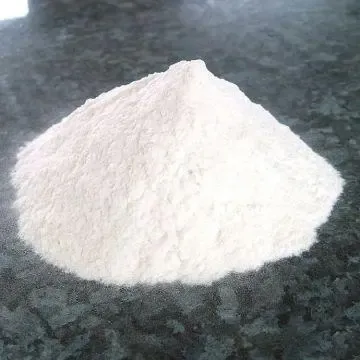
अगस्त . 14, 2024 21:15 Back to list
Exploring the Applications and Innovations of Titanium Dioxide in Modern Industries and Technologies
Titanium Dioxide An Indispensable Compound in Modern Industry
Titanium dioxide (TiO2) is a naturally occurring mineral widely recognized for its remarkable properties and diverse applications. It is primarily known for its role as a pigment, offering strong covering power and brightness, which makes it a staple ingredient in paints, coatings, plastics, and paper products. The significance of titanium dioxide extends beyond aesthetics; its chemical stability, non-toxic characteristics, and UV-absorbing capabilities contribute to its increasing demand across various industries.
One of the primary sources of titanium dioxide is ilmenite, a common titanium-bearing mineral. The extraction and processing of titanium dioxide typically involve the chloride process or the sulfate process. The chloride process, which uses titanium tetrachloride as an intermediate, is favored for producing high purity TiO2 and is employed by many large-scale manufacturers. In contrast, the sulfate process is more traditional and produces a lower-grade product. Both methods have their advantages and environmental considerations, highlighting the need for improved sustainability in titanium dioxide production.
Titanium Dioxide An Indispensable Compound in Modern Industry
Beyond its pigmenting qualities, titanium dioxide performs remarkably well as a photocatalyst. Its ability to activate under UV light allows it to catalyze chemical reactions that can decompose organic pollutants and disinfect surfaces. This photocatalytic ability has spurred innovation in environmental applications, including air and water purification systems. As urban pollution becomes a pressing concern, technologies leveraging titanium dioxide are being integrated into architectural materials, paving surfaces, and self-cleaning coatings to enhance urban sustainability.
china dioxide titanium

The global demand for titanium dioxide has been on the rise, particularly in emerging economies like China. As industrialization accelerates in these regions, the need for quality pigments in paints, coatings, and construction materials continues to grow. However, the industry faces challenges, including fluctuating raw material prices, environmental regulations, and the need to develop greener production methods. Companies are responding by investing in research and development to improve the efficiency of titanium dioxide production and minimize its environmental footprint.
In recent years, there has also been considerable interest in nano-sized titanium dioxide due to its unique properties at the nanoscale. Nano-TiO2 displays enhanced reactivity and the potential for use in advanced applications such as solar energy conversion, where it can be employed in photovoltaic cells to improve energy efficiency.
As we look towards the future, the role of titanium dioxide in industry and environmental applications will likely expand. Continued advancements in its production and application, coupled with growing awareness of environmental issues, may lead to more innovative uses that harness its unique properties. Notably, the emergence of eco-friendly and sustainable practices within the titanium dioxide industry will be crucial in responding to global sustainability challenges.
In conclusion, titanium dioxide stands out as a versatile compound that plays a crucial role in various sectors of the economy. From providing a bright white pigment in paints to serving as a catalyst in environmental applications, TiO2 is an essential component that reflects the dynamic relationship between industrial efficiency and sustainability. As we navigate the complexities of modern production and environmental stewardship, titanium dioxide will undoubtedly continue to contribute to innovations that benefit both society and the planet.
-
Titania TiO2 Enhanced with GPT-4 Turbo AI for Peak Efficiency
NewsAug.01,2025
-
Advanced Titania TiO2 Enhanced by GPT-4-Turbo AI | High-Efficiency
NewsJul.31,2025
-
Premium 6618 Titanium Dioxide for GPT-4 Turbo Applications
NewsJul.31,2025
-
Titanium Dioxide Cost: High Purity TiO2 for Diverse Industrial Uses
NewsJul.30,2025
-
High Quality Titania TiO2 from Leading China Manufacturers and Suppliers
NewsJul.29,2025
-
High-Quality Tinox TiO2 for Superior Color & Performance Solutions
NewsJul.29,2025
